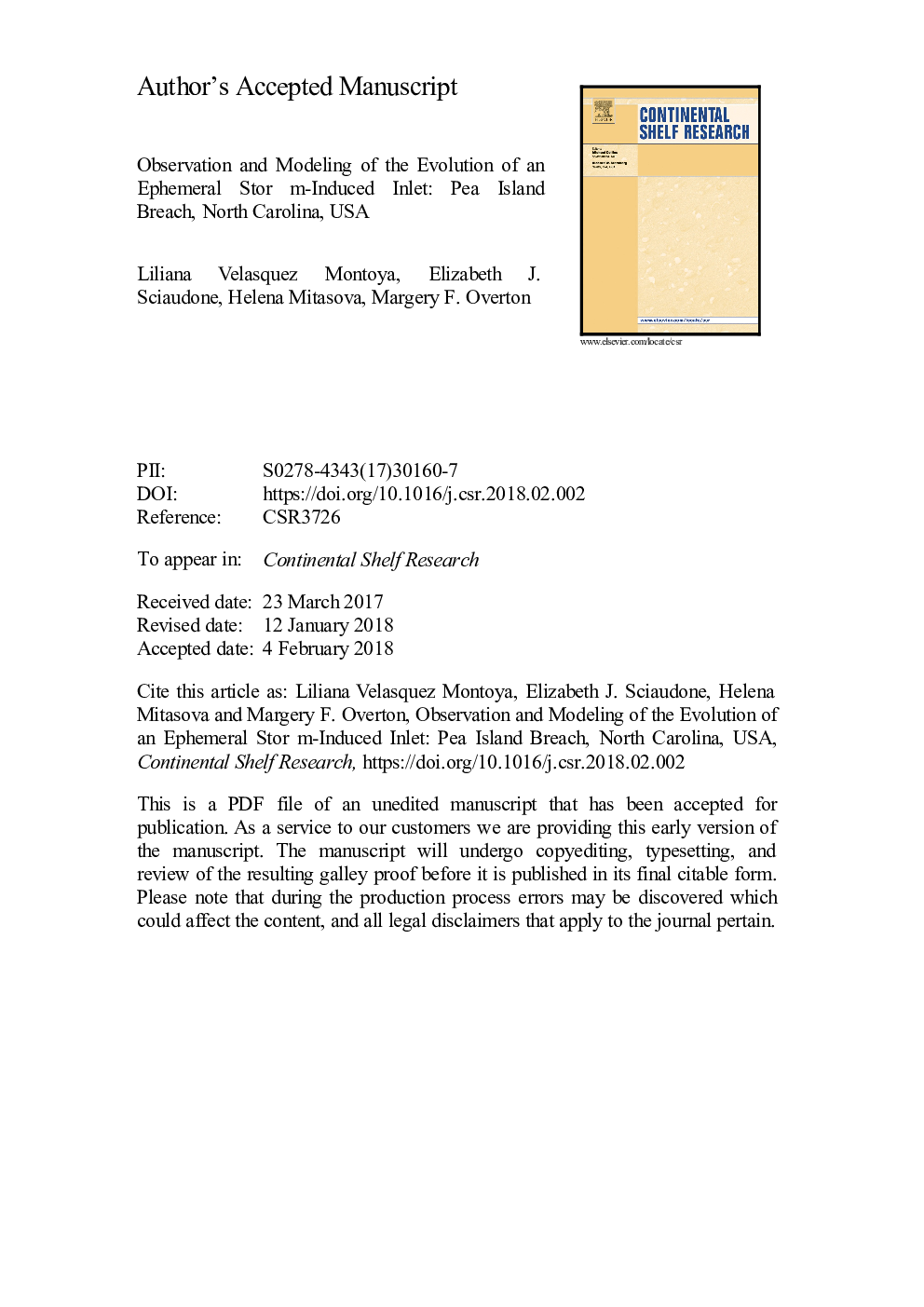| Article ID | Journal | Published Year | Pages | File Type |
|---|---|---|---|---|
| 8884075 | Continental Shelf Research | 2018 | 50 Pages |
Abstract
This study explores the spatiotemporal effects of tides, waves, and storms on flow velocities and morphology of the breach by means of remotely sensed data, geospatial metrics, and a numerical model. The combined use of observations and results from modeling experiments allowed building a conceptual model to explain the life cycle of Pea Island Breach. Wave seasonality dominated the morphological evolution of the inlet by controlling the magnitude and direction of the longshore current that continuously built transient spits at both sides of the breach. Sensitivity analysis to external forcings indicates that ocean waves can modify water levels and velocities in the back barrier. Sound-side storm surge regulates overall growth rate, duration, and decay of peak water levels entering the inlet during extreme events.
Related Topics
Physical Sciences and Engineering
Earth and Planetary Sciences
Geology
Authors
Liliana Velasquez Montoya, Elizabeth J. Sciaudone, Helena Mitasova, Margery F. Overton,
